Ferite delle Famiglie Kurde
Il dolore dei Kurdi:
Alla fine del 2019, inizio a viaggiare per le città e i villaggi Kurdi documentando i sacrifici dei peshmerga curdi nella lotta per reprimere l’ISIS.
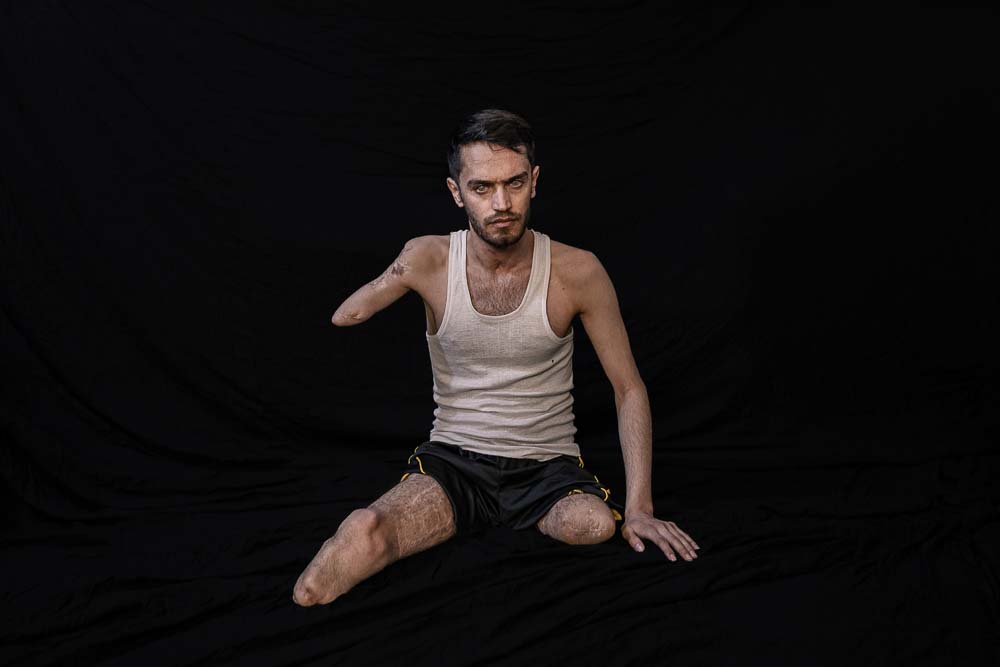
He was wounded in fighting ISIS in Dec 2014 in Makhmour near Mosul.
As a member of a team that clears IEDs, he was cleaning a field of mines when one exploded near him. The blast took both his legs, one hand, one eye, and an ear.
He has a 100% disability. He has two kids.
This is just one of the more than 10,000 Peshmerga were wounded in the against ISIS.
Il progetto mi ha portato nelle province del Kurdistan iracheno a parlare con diverse centinaia di Peshmerga, scattando ritratti intimi dei combattenti feriti, delle loro famiglie e documentando sia le storie della battaglia che le loro continue lotte per navigare nella vita post-conflitto.
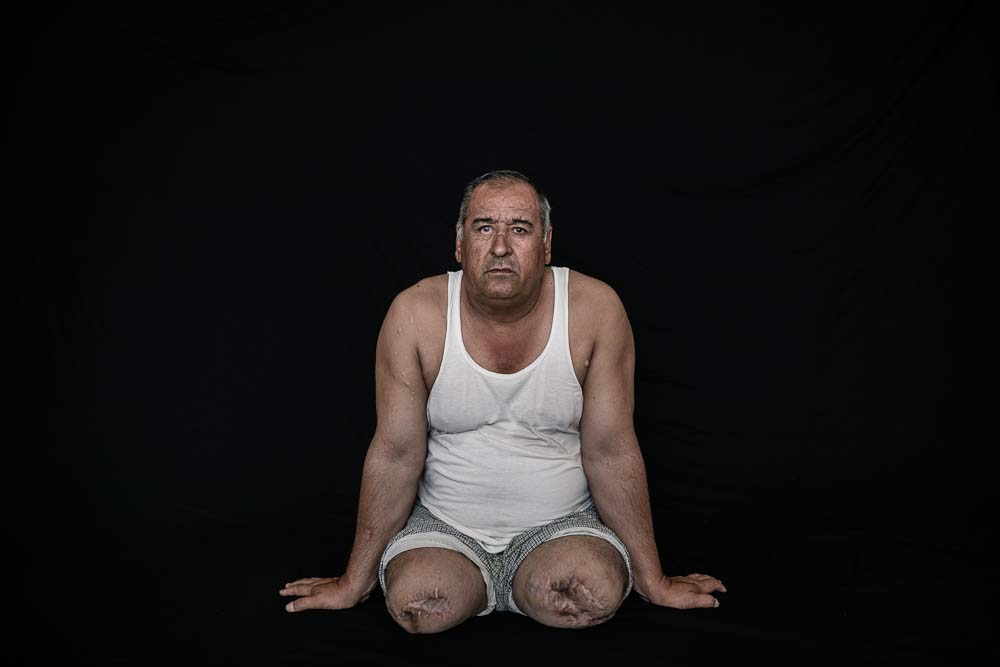
According to Media reporters, more than 10,000 Peshmargah were wounded in the IS war.
Attraverso il lavoro ho trovato storie di immensa sofferenza. Combattenti che hanno imbracciato le armi, non perché fossero obbligati a farlo, ma perché era giusto ed era quello che si doveva fare.
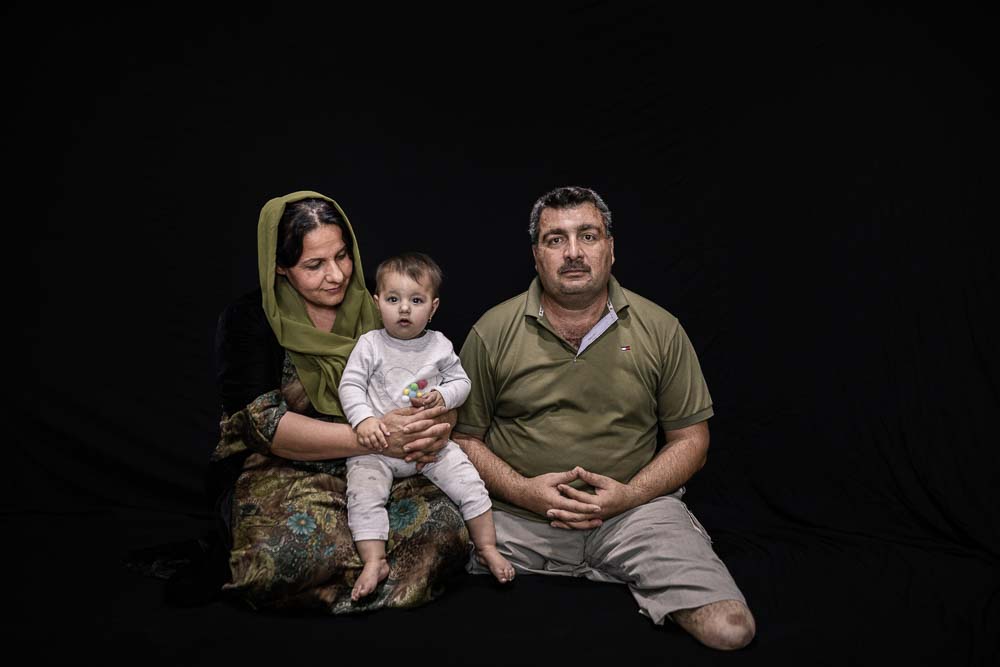
He lost both his legs to an ISIS improvised explosive device in September 2014 in Makhmour in Mosul province. Beyond the loss of limbs, Hazhar’s struggles with PTSD have made him quick to anger. He is plagued by persistent nightmares of being on the battlefield, alone, without ammunition, with ISIS closing in. With physical limitations and PTSD, he recognizes the toll the war has taken, not just on him, but also on his family. Hazhar’s wife helps to support the family both by working outside the home and within it, by tending to her children and husband.
La Storia:
Questi uomini, spesso combattendo fianco a fianco con fratelli, zii, cugini, padri e figli, sapevano che era in gioco la libertà e la sopravvivenza del loro popolo.
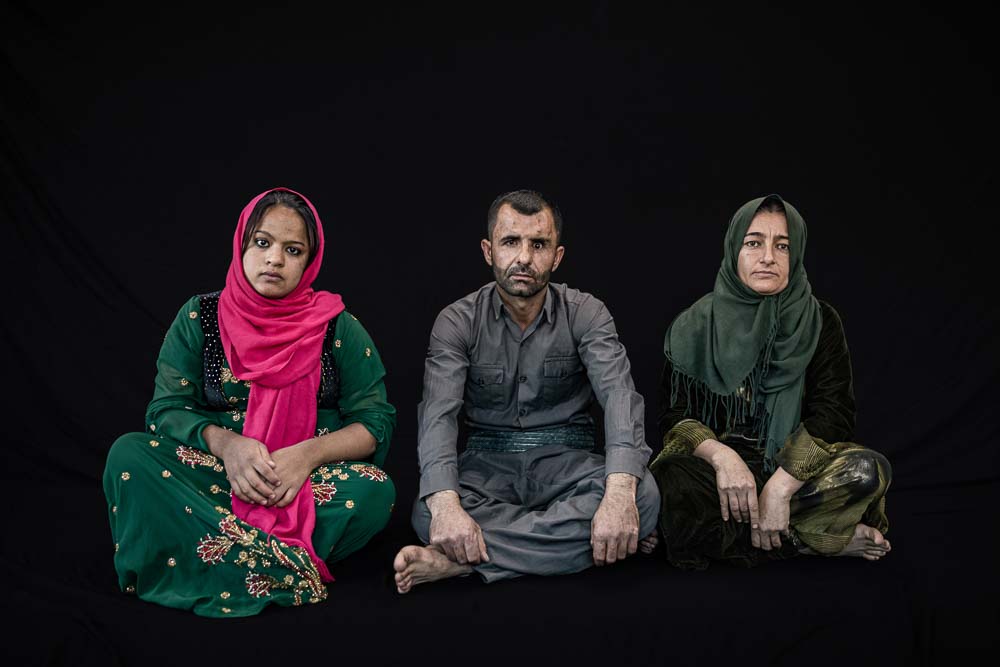
In April 2015, in Mara village in Kirkuk province, he was shot. Less than an hour later he was wounded again by an IED (improvised explosive device). It took 6 months of treatment before he would recover, at which point he went back to the frontlines.
The second time Hawar was wounded was in September 2017. While fighting in the village of Abo Mohammad in Kirkuk province he was again wounded by an IED. The explosion left him in a coma for 33 days.
The injuries left Hawar’s body battered and scared. He lost his left ear and left eye and after 5 surgeries he has recovered only 50% of his sight in his right eye. He has also lost his Duodenum and more than 200 pieces of shrapnel remain in his body. Life is hard for Hawar, with three kids he struggles to manage their needs despite receiving 100% disability designation.
With more treatment needed, he hopes the government will help to ensure that he does not have to have his leg amputated.
Mentre raccontavano le storie di aver visto la famiglia e gli amici uccisi davanti a loro, e di battaglie a cui non si aspettavano di sopravvivere, piangevano contemporaneamente per le perdite e per l’orgoglio di ciò che i loro compagni avevano fatto.
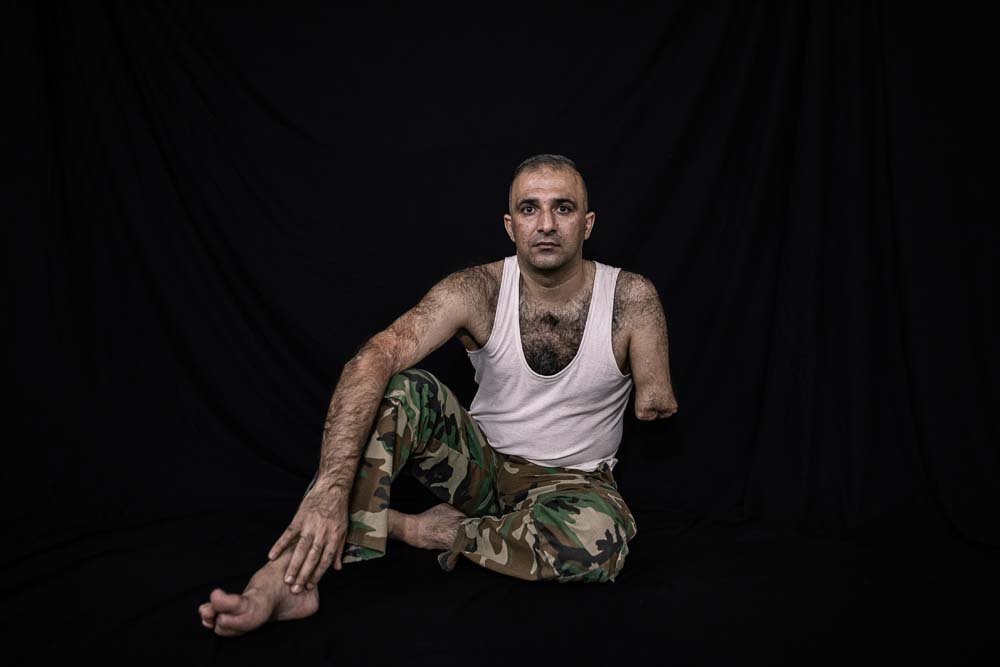
After recovering for just 18 days Halo went back to the battle and he remained there until the end of the war with ISIS.
He is married and he has a 75% disability.
This is just one of the more than 10,000 Peshmerga were wounded in the against ISIS.
Quasi tutti gli uomini hanno mostrato gravi lesioni fisiche. Braccia, gambe e occhi persi. Corpi così crivellati di ferite da proiettili e schegge che il semplice movimento creava un dolore tremolante.
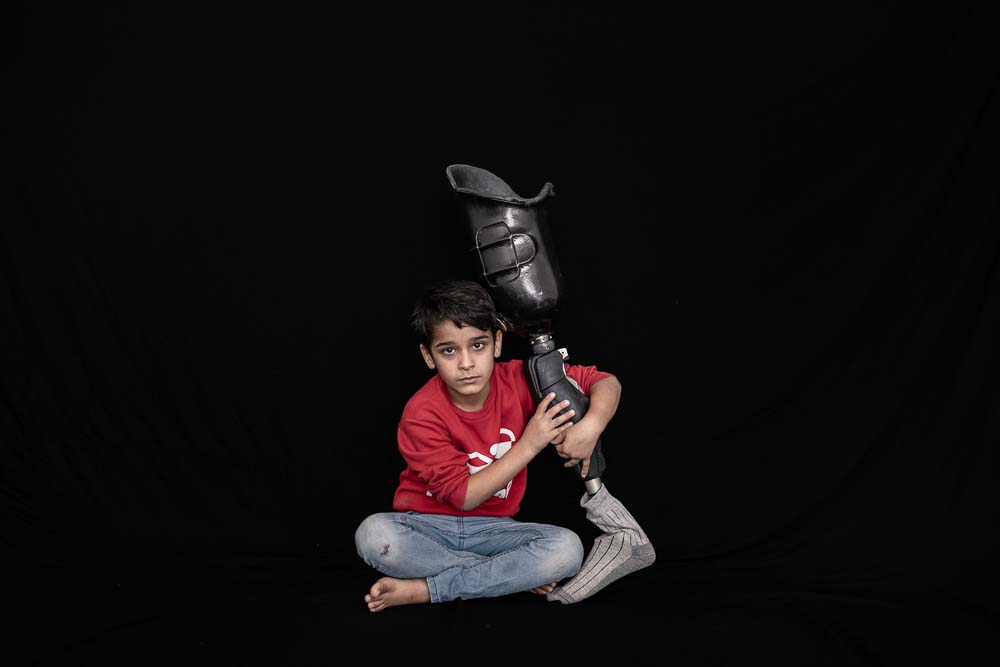
His father, Bahman has been a Peshmerga since 2007 and he was wounded while fighting ISIS in October 2015 in the Qwer area near Mosul province.
During the battle, he was first shot by two enemy bullets and was wounded again when a coalition airstrike came too close.
The severity of his wounded forced doctors to amputate his right leg.
Il ritorno a casa:
Questi uomini mostravano anche i segni del pesante fardello dei traumi mentali, del disturbo da stress post-traumatico e dei ricordi che non li avrebbero abbandonati. Nonostante tutto quello che hanno sofferto, hanno spesso detto che sarebbero tornati di nuovo alla lotta se mai fossero stati chiamati a farlo. Lo farebbero per i loro figli, per le loro famiglie, per la loro gente e per il resto del mondo.
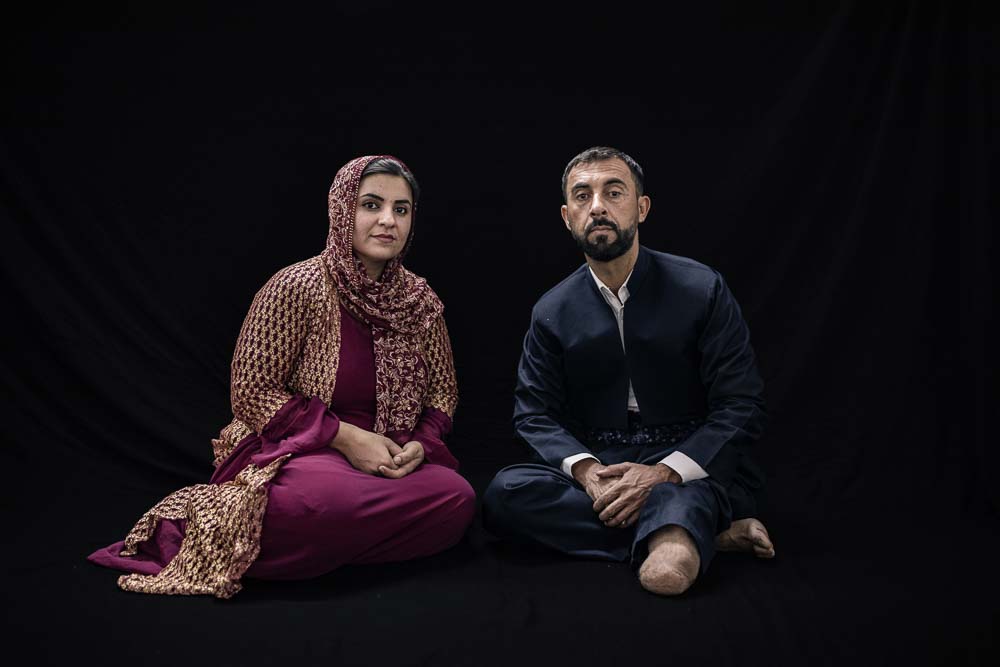
He has a 95% disability and he has three kids: Rayan 2011, Rozhin 2015 and Ahmad 2019.
His wife Chenar Khalid Abdullah born 1987.
According to Media reporters, more than 10,000 Peshmargah were wounded in the IS war.
Tragicamente, la loro sofferenza non finisce con il ritorno a casa poichè lì gli uomini affrontano nuove sfide, come ottenere arti protesici, cure continue e devono provvedere alle loro famiglie nonostante le lesioni debilitanti e altro ancora.
Inoltre è questo il momento in cui si chiedono se darebbero tutto per aiutare a proteggere il mondo, se il mondo li aiuterà o li dimenticherà ora che hanno riposto le loro armi.
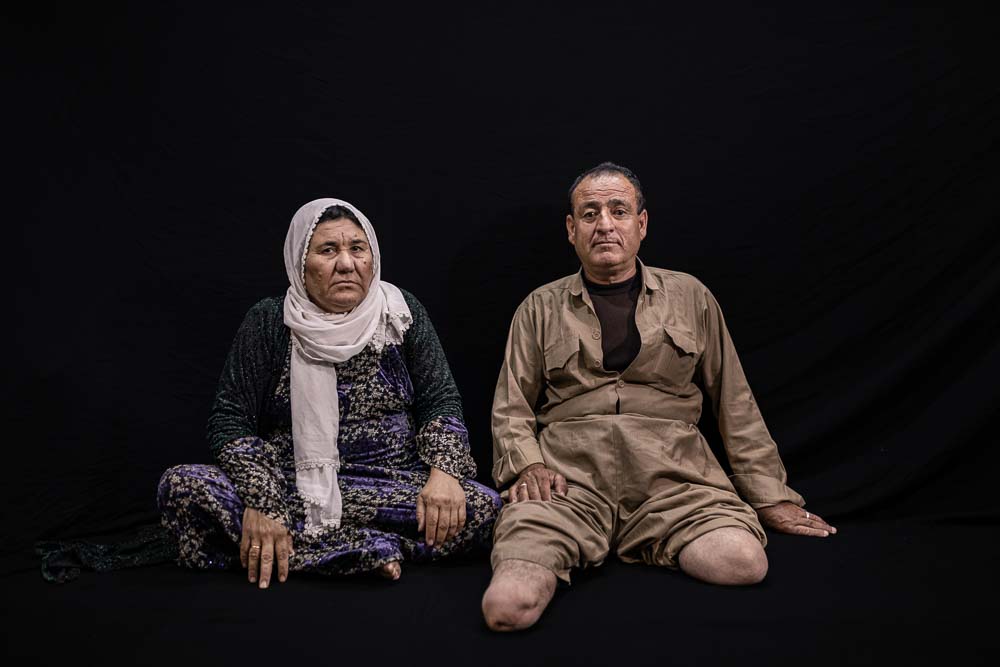
He got wounded by IED when they are driving at the frontline and he lost two legs.
A few months later, he returned to the front and continued to fight.
His wife is Sanjaq Omar Mostafa, born in 1960
He has nine kids and he has a 100% disability.
According to Media reporters, more than 10,000 Peshmargah were wounded in the IS war.
Infine spero che, attraverso questo lavoro di esplorazione delle questioni umanitarie di conflitto e postbellico, il mondo possa capire meglio ciò che i Kurdi, la loro terra e le loro famiglie hanno subito e con loro, di fatto, tutto il resto del mondo.
Finalista al Travel Tales Award 2021















Lascia un commento